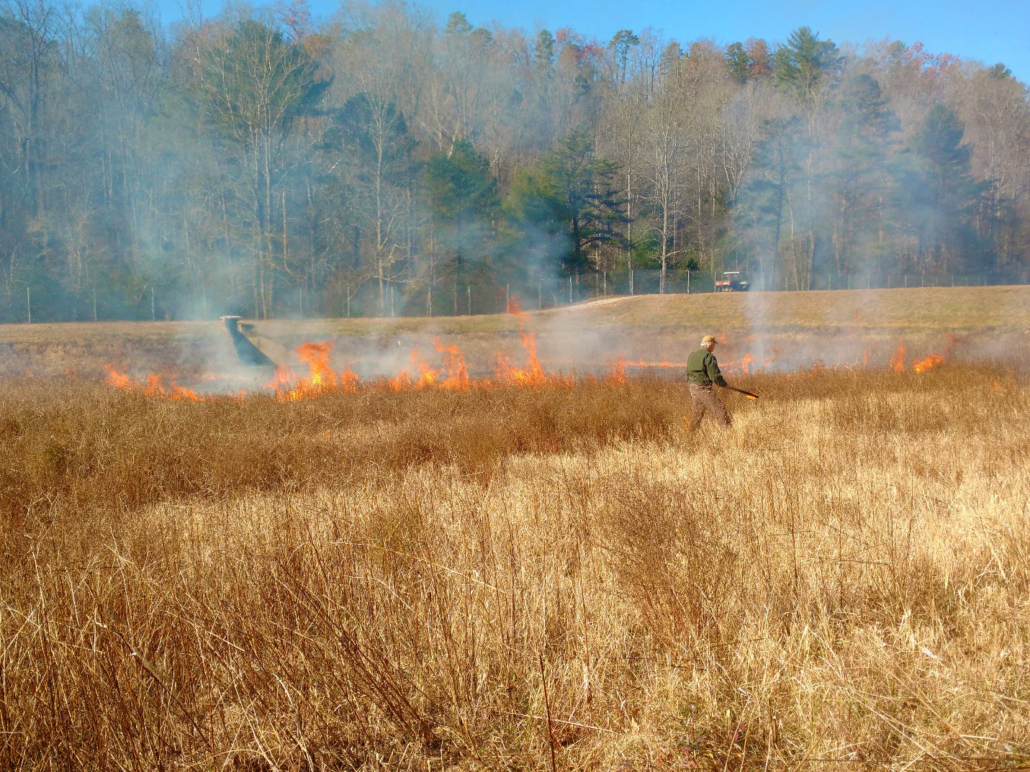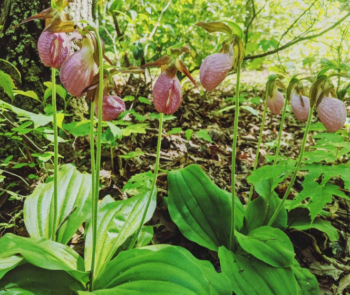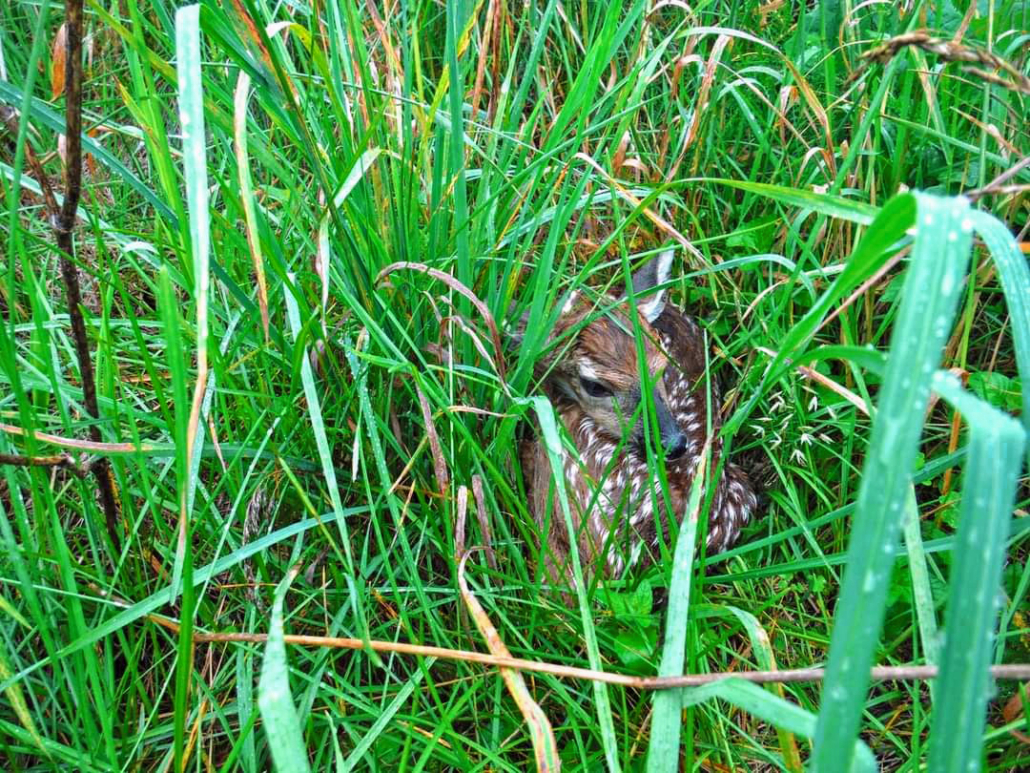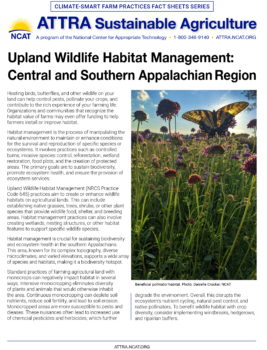Upland Wildlife Habitat Management: Central and Southern Appalachian Region

Beneficial pollinator habitat. Photo: Danielle Crocker, NCAT
CLIMATE-SMART FARM PRACTICES FACT SHEET SERIES
By Danielle Crocker, NCAT Agriculture Specialist
Hosting birds, butterflies, and other wildlife on your land can help control pests, pollinate your crops, and contribute to the rich experience of your farming life. Organizations and communities that recognize the habitat value of farms may even offer funding to help farmers install or improve habitat.
Habitat management is the process of manipulating the natural environment to maintain or enhance conditions for the survival and reproduction of specific species or ecosystems. It involves practices such as controlled burns, invasive species control, reforestation, wetland restoration, food plots, and the creation of protected areas. The primary goals are to sustain biodiversity, promote ecosystem health, and ensure the provision of ecosystem services.
Upland Wildlife Habitat Management (NRCS Practice Code 645) practices aim to create or enhance wildlife habitats on agricultural lands. This can include establishing native grasses, trees, shrubs, or other plant species that provide wildlife food, shelter, and breeding areas. Habitat management practices can also involve creating wetlands, nesting structures, or other habitat features to support specific wildlife species.
Habitat management is crucial for sustaining biodiversity and ecosystem health in the southern Appalachians. This area, known for its complex topography, diverse microclimates, and varied elevations, supports a wide array of species and habitats, making it a biodiversity hotspot.
Standard practices of farming agricultural land with monocrops can negatively impact habitat in several ways. Intensive monocropping eliminates diversity of plants and animals that would otherwise inhabit the area. Continuous monocropping can deplete soil nutrients, reduce soil fertility, and lead to soil erosion. Monocropped areas are more susceptible to pests and diseases. These nuisances often lead to increased use of chemical pesticides and herbicides, which further degrade the environment. Overall, this disrupts the ecosystem’s nutrient cycling, natural pest control, and native pollinators. To benefit wildlife habitat with crop diversity, consider implementing windbreaks, hedgerows, and riparian buffers.

Prescribed burn. Photo: Danielle Crocker, NCAT
Key Principles of Habit Management
Site Assessment
Conducting a thorough site assessment before implementing habitat management practices is key to understanding the specific ecological conditions and needs of the area. It allows managers to identify existing resources, potential threats, and suitable management strategies tailored to the site’s unique characteristics. Assessments help in setting realistic goals, ensuring effective resource allocation, and avoiding unintended negative impacts. Moreover, they facilitate monitoring and adaptive management by providing baseline data.
Native Species Promotion

Native Lady Slippers. Photo: Danielle Crocker, NCAT
Using native plants in habitat management is essential for supporting local ecosystems. Native plants are adapted to the region’s climate, soil, and wildlife, and they promote biodiversity by providing food and habitat for local species. They enhance soil health and water conservation, as their deep root systems prevent erosion and improve water infiltration. Additionally, native plants require fewer resource inputs, such as water and fertilizers, reducing maintenance and environmental impact. Their use fosters ecosystem resilience and stability, crucial for sustaining local flora and fauna.
Invasive Species Control
Invasive species pose a significant threat to Appalachian ecosystems. Strategies for invasive species control include early detection and monitoring, mechanical removal, biological control, restoration of native vegetation, public education, following policy, and regulation enforcement. Curbing the spread of invasives helps protect the integrity of habitats and ensures the survival of native plants and animals.
Habitat Management Importance
Habitat management is vital for conservation, as it directly addresses the needs of wildlife and plant species by preserving and improving their living conditions. It helps prevent habitat loss and fragmentation, which are major threats to biodiversity. By maintaining diverse and healthy ecosystems, habitat management supports species resilience to environmental changes, such as climate change and natural disasters. It also enhances ecosystem services, including water purification, soil stabilization, and carbon sequestration. Ultimately, effective habitat management ensures the long-term survival of species and the integrity of ecosystems, contributing to global conservation efforts and sustainable natural resource use, benefiting both biodiversity and human communities.

Fawn. Photo: Danielle Crocker, NCAT
Further Resources
Control Mechanisms, USDA National Invasive Species Information Center
Controlling Soil Erosion, USDA Natural Resources Conservation Service
Invasive and Non-Native Species, National Park Service
Invasive Plants, U.S. Forest Service
Native Gardening, U.S. Forest Service
Native Plants, National Wildlife Federation
Northern Bobwhite Quail: Restoring a Species, USDA Natural Resources Conservation Service
Protecting Soil Resources, North Carolina Forest Service
Soil Health Assessment, USDA Natural Resources Conservation Service
Upland Wildlife Habitat Management, USDA Natural Resources Conservation Service
Upland Wildlife Habitat Management Conservation Practice Overview, USDA
Water Quality, U.S. Environmental Protection Agency
Upland Wildlife Habitat Management: Central and Southern Appalachian Region
By Danielle Crocker, NCAT Agriculture Specialist
Published February 2024
©NCAT
IP656
This publication is produced by the National Center for Appropriate Technology through the ATTRA Sustainable Agriculture program, under a cooperative agreement with USDA Rural Development. This publication was also made possible in part by funding from the Partnership for Climate-Smart Commodities Grant-Building Soils, Building Equity, as administered by the USDA, grant # NR233A750004G024. ATTRA.NCAT.ORG


